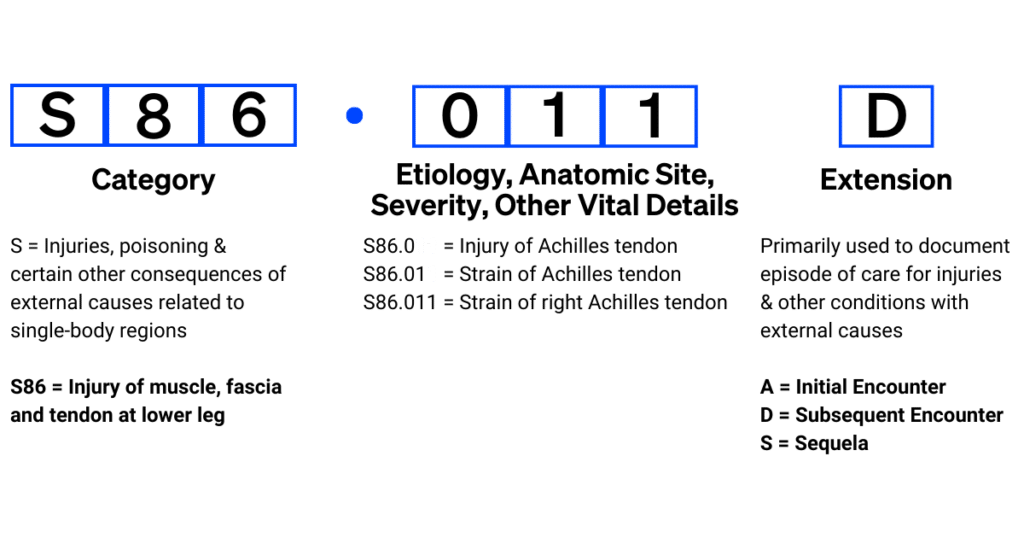An Introduction to ICD-10 Codes

If you’re familiar with our cookieless healthcare targeting solution, Custom Patient Targeting, you may have noticed a recurring term – ICD-10 codes. Specifically used when we talk about building custom seed sets for healthcare advertisers. So what exactly are these codes? They’re the primary standard for classifying standard medical diagnoses and are utilized by Dstillery to build condition-specific targeting models. Dispelling the ICD-10 code is the fastest way to get your campaign up and running at Dstillery.
The Anatomy of an ICD-10 Code
ICD-10 codes range from three to seven characters. The longer the code, the more specific the diagnosis. The first character is always a letter, and the following two codes are either letters or numbers.

The first three characters of an ICD-10 code designate the category of the condition. In this example, the letter S denotes a “poisoning injury and other consequences of external single body regions.” Paired with the 8 and 6, the diagnosis falls into the category of “muscle injury, fascia, and tendon of the lower leg.” A three-character code that lacks further subdivision can stand alone as a code, but when greater specificity is available, it is best to choose the more specific code. We encourage the use of both wide umbrella codes and granular codes to ensure targeting goals are as specific and broad as possible.
Characters three through six indicated related etiology which is to say that they focus on the cause of the condition, set of causes, manner of causation, anatomic site, severity, and other clinical details. In the example above it helps us understand that the code is specifying the strain of the right Achilles tendon. The final character is usually referred to as the extension. It can provide information about the characteristics of the encounter or moment of injury. Not every ICD-10 code is allowed to use a seventh character. The extension must always be in the seventh position, and any characters in between should be filled by an X.
Choosing ICD-10 Codes For Your Model
In many cases, you will need to choose multiple ICD-10 codes for a single condition. The more codes and symptoms your targeting model focuses on, the higher the accuracy which will help reduce campaign spend waste and ensure that your patients are being targeted. Oftentimes there are many ICD-10 codes that target or explain similar conditions and ailments. We encourage you to choose as many that seem applicable to your model since many times one condition can occur with another or lead to another.
With injury-centric codes you can find multiple ICD-10 codes that further describe the scenario that resulted in the injury. These codes are often considered “secondary codes” since they describe the cause of injury rather than a chronic condition and capture the cause, the intent, the place or event, or the activity the patient was engaged in at the time of injury. These are particularly helpful for over-the-counter bandages, splints, crutches, and other medical assistance devices and items. You can use as many external cause codes as necessary to help fuel the model. Furthermore, these ICD-10 codes blended with search keyword data help us build your brand a campaign that targets patients throughout each part of their patient journey from the top to the bottom of the funnel. This blend of search terms and ICD-10 codes create an audience that prioritizes audience quality ensuring that vendors have accurate points of measurement.
Bringing It All Together
Understanding the ICD-10 code structure will help streamline and strengthen your Custom Patient Targeting campaign and ensure that your model is powered by the most precise and widely utilized data signals in the healthcare space.


